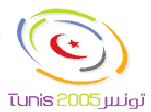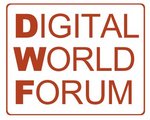|
WSIS-GOV Civil Society |
| Automatic Translation |

|

|
C2 WSIS ACTION LINE

Lead Facilitator |

Co-Facilitator |
|---|
|
ORGANIZATION & PROCESS
The recommendations of the Geneva action plan concerning the C2.Information and communication infrastructure: action line are :
Infrastructure is central in achieving the goal of digital inclusion, enabling universal,
sustainable, ubiquitous and affordable access to ICTs by all,
taking into account relevant solutions already in place in developing countries
and countries with economies in transition, to provide sustainable connectivity and access
to remote and marginalized areas at national and regional levels.
e)In the context of national e-strategies, address the special requirements of older people, persons with disabilities, children, especially marginalized children and other disadvantaged and vulnerable groups, including by appropriate educational administrative and legislative measures to ensure their full inclusion in the Information Society. f) Encourage the design and production of ICT equipment and services so that everyone, has easy and affordable access to them including older people, persons with disabilities, children, especially marginalized children, and other disadvantaged and vulnerable groups, and promote the development of technologies, applications, and content suited to their needs, guided by the Universal Design Principle and further enhanced by the use of assistive technologies. g) In order to alleviate the challenges of illiteracy, develop affordable technologies and non-text based computer interfaces to facilitate people’s access to ICT, h) Undertake international research and development efforts aimed at making available adequate and affordable ICT equipment for end users. i) Encourage the use of unused wireless capacity, including satellite, in developed countries and in particular in developing countries, to provide access in remote areas, especially in developing countries and countries with economies in transition, and to improve low-cost connectivity in developing countries. Special concern should be given to the Least Developed Countries in their efforts in establishing telecommunication infrastructure. j) Optimize connectivity among major information networks by encouraging the creation and development of regional ICT backbones and Internet exchange points, to reduce interconnection costs and broaden network access. k) Develop strategies for increasing affordable global connectivity, thereby facilitating improved access. Commercially negotiated Internet transit and interconnection costs should be oriented towards objective, transparent and non-discriminatory parameters, taking into account ongoing work on this subject. l) Encourage and promote joint use of traditional media and new technologies. It is kindly suggested to adopt working methods
that would be similar ( but not necessarily exactly similar ) to those adopted
for the actions lines facilitated by UNESCO ( eg Action line C3
:
Working Methods of the Multi-stakeholders Team
An exploratory proposal for themes Relationships with the Internet Governance Forum Process There are some dynamic coalitions on related topics :
Related actions lines : C4. Capacity building and C6.Enabling environment. |
|
C2 ACTION LINE MEETINGS
|


